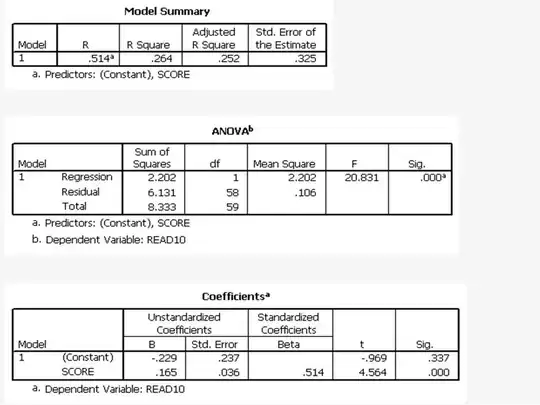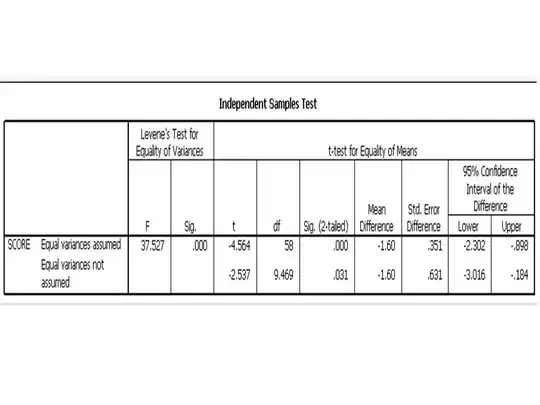
 My sample is 60 participants.
At first, I did not expect to analyze the correlation,
but the result is interesting,
so I would like to.
My sample is 60 participants.
At first, I did not expect to analyze the correlation,
but the result is interesting,
so I would like to.
The 60 participants are 50 people who have good reading skill AND another 10 people who have poor reading skill. They took a test for which the full score = 7. The good reading skill group got an average score = 6.7. The poor reading skill group got an average score = 5.1.
Questions: Is there a test to find these relations?
- Do the good reading skill group and poor reading skill group have significantly different scores?
- Does reading skill relate to achieving score?
- Does good reading skill affect score positively?
I have SPSS, but do not know how to analyze these relationships. Thank you.